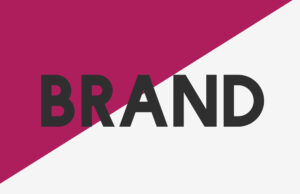 Color psychology has gained significant attention in various industries, especially in the realm of business. The strategic use of colors can profoundly impact consumer perceptions, purchase decisions, and overall brand identity.
Color psychology has gained significant attention in various industries, especially in the realm of business. The strategic use of colors can profoundly impact consumer perceptions, purchase decisions, and overall brand identity.
Business owners can harness the power of color psychology to their advantage, whether using a free logo maker or creating other branding elements. Here are some points that showcase the power of color psychology and how business owners can utilize it effectively.
The Emotive Language of Colors
Colors possess the remarkable ability to evoke a range of emotions, often subconsciously. Warm colors such as red, orange, and yellow are associated with feelings of energy, excitement, and warmth. On the other hand, cool colors like blue, green, and purple evoke calmness, trust, and relaxation. Neutrals like white, gray, and black convey simplicity, sophistication, and timelessness.
Understanding these emotional associations allows business owners to choose colors that align with their brand personality and the desired emotional response from their audience. For instance, a fitness brand seeking to evoke energy and motivation might opt for vibrant reds. Meanwhile, a luxury spa might employ calming blues and greens to evoke tranquility.
Building Brand Identity
Color plays a pivotal role in creating a recognizable and cohesive brand identity. Consistency in color usage across all branding elements — such as logos, packaging, websites, and advertisements — enhances brand recognition and recall.
Think of iconic brands like Coca-Cola with its distinctive red or Starbucks with its inviting green. Business owners should select colors that align with their brand values and the emotions they wish to evoke. By doing so, they can create a lasting impression on consumers, making their brand more memorable and relatable.
Influencing Consumer Behavior
Colors can also influence consumer behavior, including purchasing decisions. Certain colors have been shown to enhance appetite, which is why many fast-food chains incorporate red and yellow in their branding.
Moreover, impulse purchases can be encouraged by using eye-catching colors that stimulate curiosity and excitement. Limited-time offers or discounts presented in attention-grabbing colors can drive immediate action from consumers.
Savvy business owners utilize this knowledge to guide consumers toward desired actions, such as making a purchase or signing up for a newsletter. Remember to use the principles of color psychology in all aspects of branding and marketing — not just logo design.
Cultural Considerations
Color psychology isn’t universally consistent across all cultures. Different colors hold varying meanings and associations in different societies. For example, while white signifies purity and simplicity in many Western cultures, it symbolizes mourning in certain Eastern cultures.
Business owners with a global reach must consider these cultural nuances when selecting colors for their branding and marketing efforts. Adapting color choices to resonate positively with the target culture can foster a deeper connection and avoid unintended misinterpretations.
Creating Visual Hierarchy and Readability
Colors are instrumental in creating visual hierarchy and enhancing readability. Business owners can use color to direct the viewer’s attention to key elements such as call-to-action buttons, important information, or product highlights.
Effective contrast between text and background colors ensures that content remains legible, contributing to a seamless user experience. For instance, a business owner launching a new product might use a bold, contrasting color for the “Buy Now” button to draw attention and encourage conversions.
Evoking Trust and Credibility
Certain colors are associated with qualities like trust, professionalism, and credibility. Blue, in particular, is often perceived as a color of reliability and competence. Business owners aiming to establish themselves as trustworthy entities in their industry can integrate shades of blue into their branding.
Financial institutions and technology companies frequently employ blue tones to instill a sense of security and dependability in their customers. By strategically incorporating such colors, business owners can cultivate a positive perception of their brand’s integrity.
Differentiation from Competitors
In a crowded marketplace, standing out from competitors is crucial for sustained success. Thoughtful use of color can aid in differentiation by creating a unique visual identity. While considering industry norms is essential, deviating slightly from the conventional color palette can help a brand be more memorable.
Analyzing competitors’ color choices and choosing hues that are distinct yet aligned with the brand’s personality can set a business apart and pique consumer interest. This differentiation can contribute to increased brand recall and a stronger competitive edge.
How Color Psychology Shapes Business Success
As industries continue to evolve, the art of using colors to communicate emotion and ideas remains an evergreen strategy, turning the ordinary into the extraordinary and the functional into the memorable. Embrace the palette you choose, and watch as your business canvas transforms into a masterpiece of connection and achievement.


